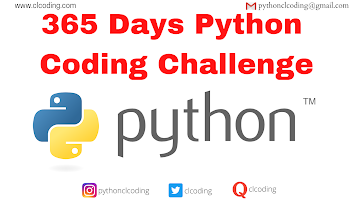import numpy as np
import matplotlib.pyplot as plt
from mpl_toolkits.mplot3d import Axes3D
fig = plt.figure(figsize=(10, 10))
ax = fig.add_subplot(111, projection='3d')
vertices = np.array([
[0, 0, 0],
[1, 0, 0],
[1, 1, 0],
[0, 1, 0],
[0, 0, 1],
[1, 0, 1],
[1, 1, 1],
[0, 1, 1]
])
edges = [
[0, 1], [1, 2], [2, 3], [3, 0],
[4, 5], [5, 6], [6, 7], [7, 4],
[0, 4], [1, 5], [2, 6], [3, 7]
]
for edge in edges:
ax.plot3D(*zip(*vertices[edge]),color="b",linewidth=2)
ax.set_title("3D wireframe Grid",fontsize=20)
ax.set_xlabel('X')
ax.set_ylabel('Y')
ax.set_zlabel('Z')
ax.set_box_aspect([1,1,1])
plt.show()
#source code --> clcoding.com
Code Explanation:
1. Importing Required Libraries
import numpy as np
import matplotlib.pyplot as plt
from mpl_toolkits.mplot3d import Axes3D
numpy: This is used for efficient numerical
operations, especially creating arrays. In this case, it is used to store the
vertices of the 3D wireframe.
fig = plt.figure(figsize=(10, 10))
ax = fig.add_subplot(111, projection='3d')
plt.figure(figsize=(10, 10)): This creates a figure
of size 10x10 inches. The figsize argument sets the overall size of the plot.
vertices = np.array([
[0, 0, 0],
[1, 0, 0],
[1, 1, 0],
[0, 1, 0],
[0, 0, 1],
[1, 0, 1],
[1, 1, 1],
[0, 1, 1]
])
Here, vertices is a NumPy array containing the 8
vertices of a cube. Each vertex is represented by its (x, y, z) coordinates in
3D space.
4. Defining the Cube's Edges
edges = [
[0, 1],
[1, 2], [2, 3], [3, 0], # Bottom square
[4, 5],
[5, 6], [6, 7], [7, 4], # Top square
[0, 4],
[1, 5], [2, 6], [3, 7] # Vertical
connections between top and bottom
]
edges defines the connections (or lines) between the
vertices of the cube. Each pair of indices (e.g., [0, 1], [1, 2]) refers to the
vertices that should be connected.
for edge in edges:
ax.plot3D(*zip(*vertices[edge]), color="b", linewidth=2)
for edge in edges: This loop iterates over all the edges defined in the edges list.
vertices[edge]: This selects the pair of vertices
from the vertices array using the indices specified in the edges list.
ax.set_title("3D Wireframe Grid",
fontsize=20)
ax.set_xlabel('X')
ax.set_ylabel('Y')
ax.set_zlabel('Z')
ax.set_title("3D Wireframe Grid",
fontsize=20): This sets the title of the plot to "3D Wireframe Grid"
with a font size of 20.
ax.set_box_aspect([1, 1, 1])
ax.set_box_aspect([1, 1, 1]): This ensures that the
aspect ratio of the plot is equal in all three dimensions. This makes sure the
cube looks proportionate, rather than distorted, regardless of the plot window
size.










.png)







.png)
























0 Comments:
Post a Comment